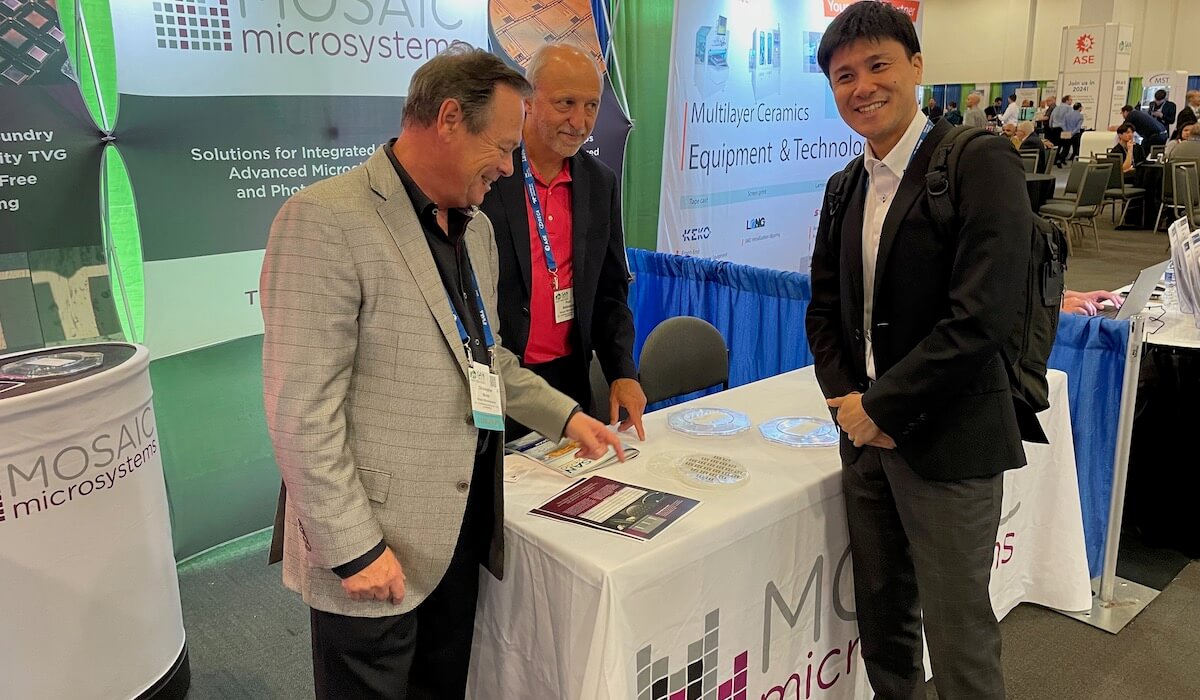In addressing the global semiconductor talent shortage, Mosaic Microsystems’ approach is to think globally and act locally. We aim to become a leading worldwide supplier of glass interposers to the semiconductor industry by building on the considerable ecosystem in Rochester, NY, where a talented labor pool and top-notch colleges and universities exist.
Our approach consists of five parts. The first is to work with local and regional educational institutions to ensure an adequate supply of employees with the right skills, at the right levels, in the right numbers, and at the right time. This includes people with 2-year, bachelor’s, and graduate degrees.
Mosaic has close ties with the University of Rochester and the Rochester Institute of Technology and already employs people who have graduated from both schools. RIT is an essential partner due to its Microelectronics Department, which is the first of its kind in the country, and its co-op program, which allows companies to hire college students temporarily and, if they are a good fit, hire them full-time once they graduate. RIT is also one of only six universities in the U.S. that is a member of the U.S.-Japan University Partnership for Workforce Advancement and Research & Development in Semiconductors for the Future (UPWARDS).
At the 2-year level, Mosaic will be working with Monroe Community College, which is the largest community college in Upstate New York and has two existing manufacturing programs that could be relevant: Optics Manufacturing and Precision Machining. Beyond the Rochester area, four regional universities can provide us with well-trained students: Rensselaer Polytechnic Institute, Clarkson University, Cornell University, and Binghamton University. In addition to recruiting from these universities, we also have collaborations such as SBIR/STTR grants. This helps familiarize students with our technology so they can hit the ground running should they become employees.
The second part is to recruit from the existing labor pool in Rochester, which consists of many highly trained and experienced people who used to work for companies like Kodak and Xerox. Across Upstate New York there are people with experience in semiconductors from companies like IBM and GlobalFoundries.
The third part of the plan is to work with local community organizations such as RochesterWorks to help the economically disadvantaged and unemployed find jobs.
The fourth part of our plan is to provide on-the-job training and continuing education opportunities for existing employees through mentoring and professional development courses.
The fifth part is to reach out to local public schools — particularly the Rochester City School District, which has a high percentage of poor and disadvantaged students — to teach the students about opportunities in semiconductor manufacturing to develop a pipeline of future employees.
Having a high concentration of educational institutions with programs relevant to semiconductor manufacturing, a large workforce skilled in manufacturing, and a large underserved–and untapped — population will enable Mosaic to achieve its goal of having a well-trained and diversified workforce that supports our growth plans.
References
- Society for Human Resource Management Human Capital Benchmarking Report, Employment Data, p. 10, SHRM Benchmarking 2023.
This post originally appeared as part of our Community Reflections article in the 2024 Yearbook.





















